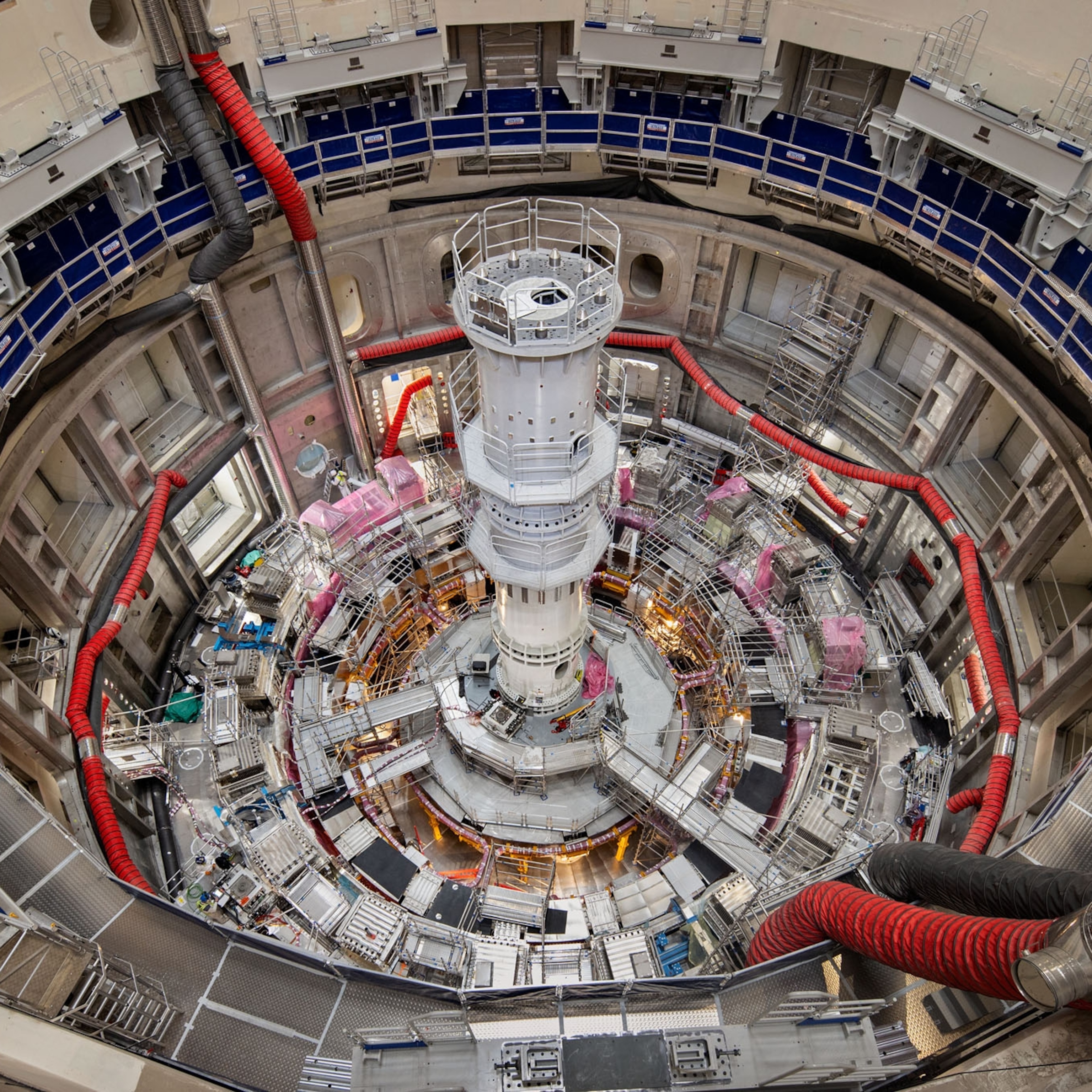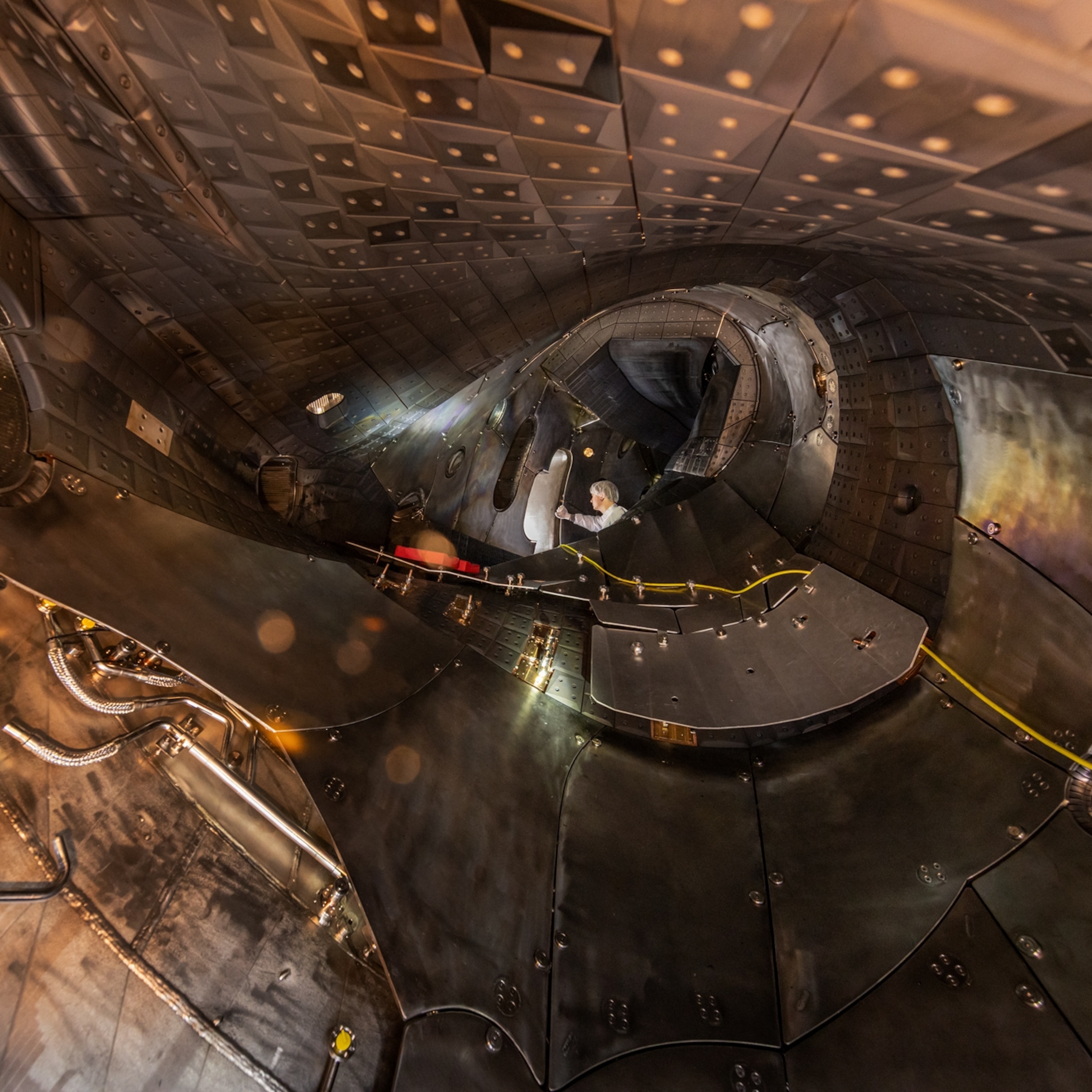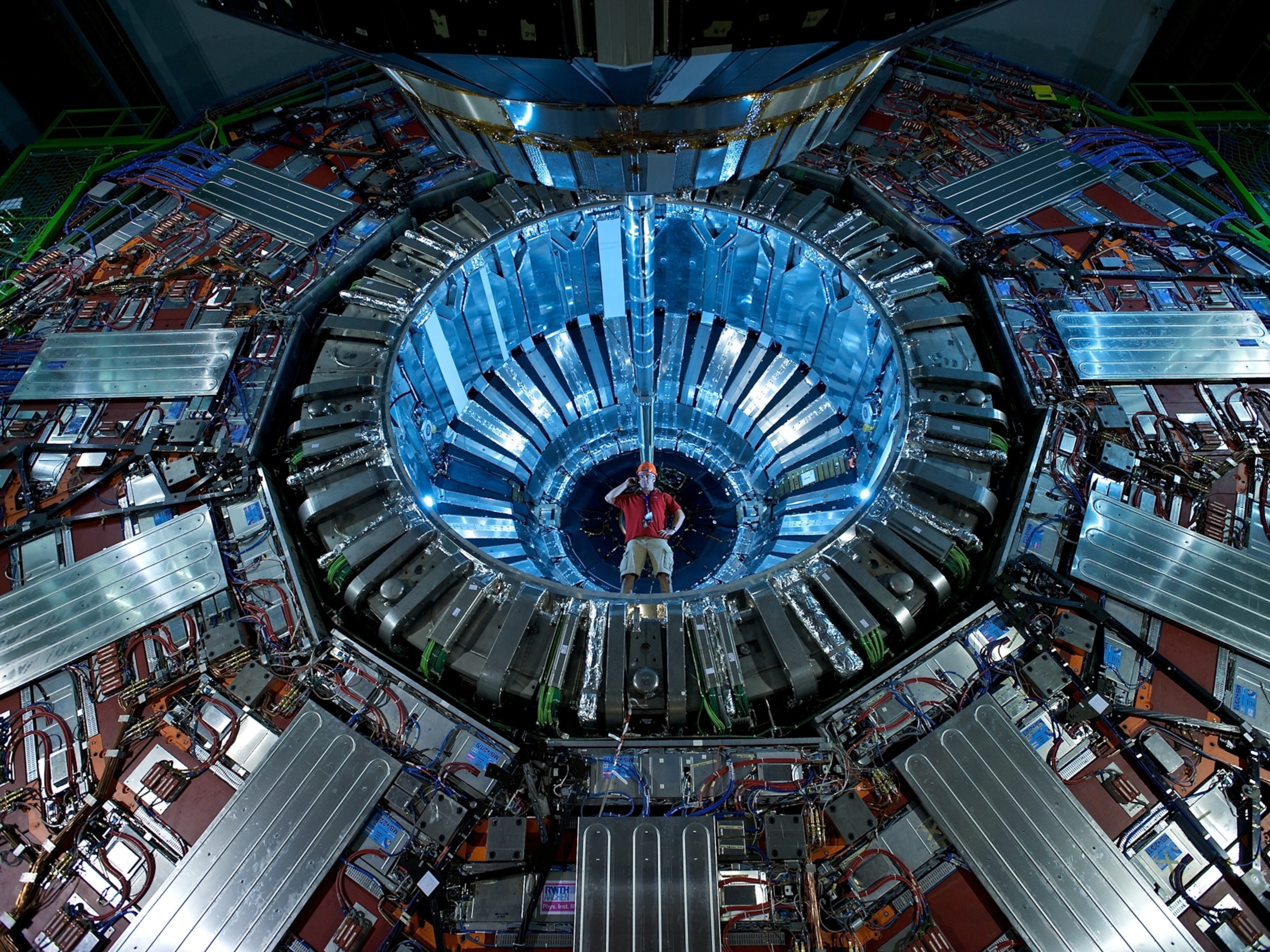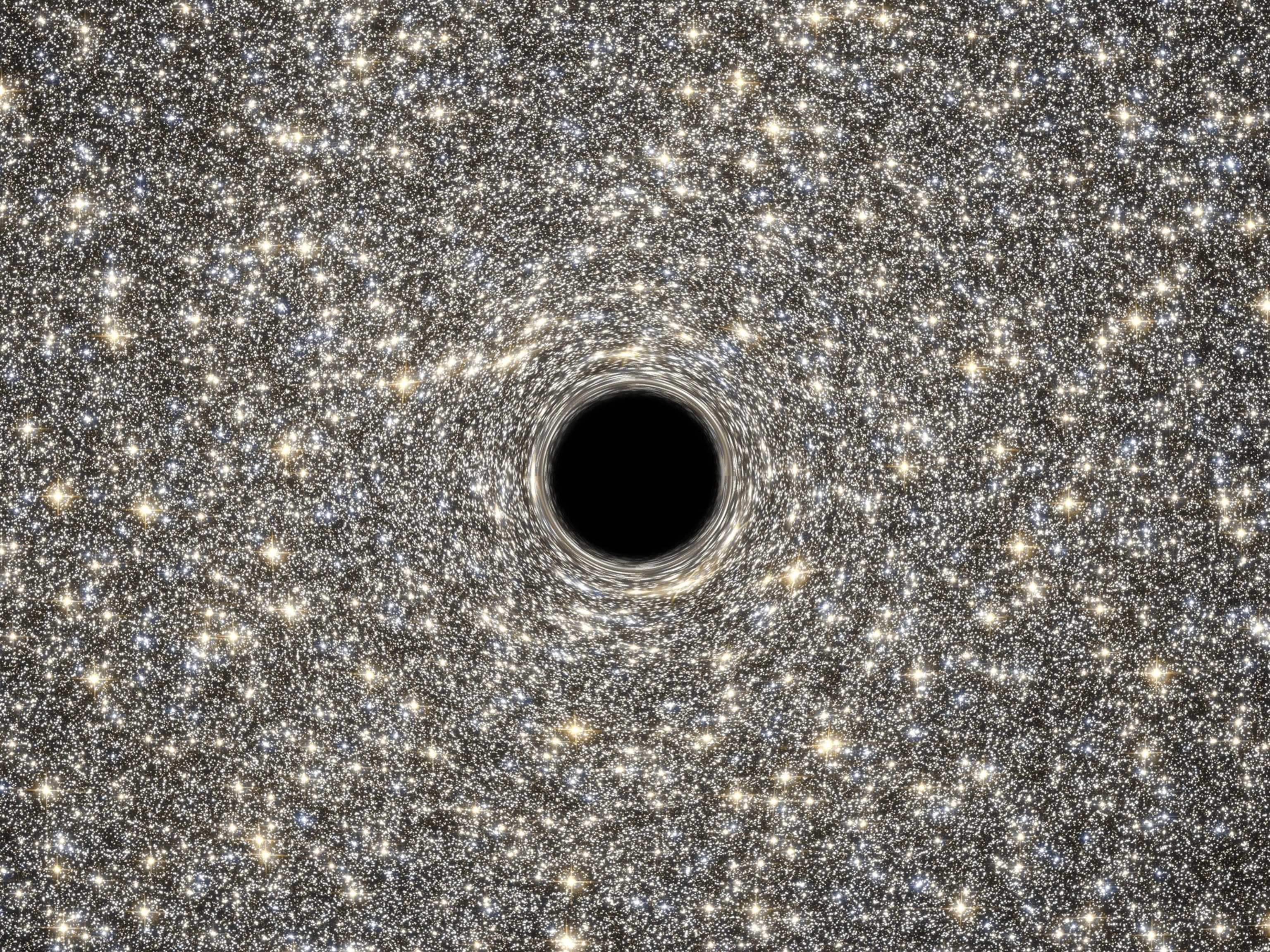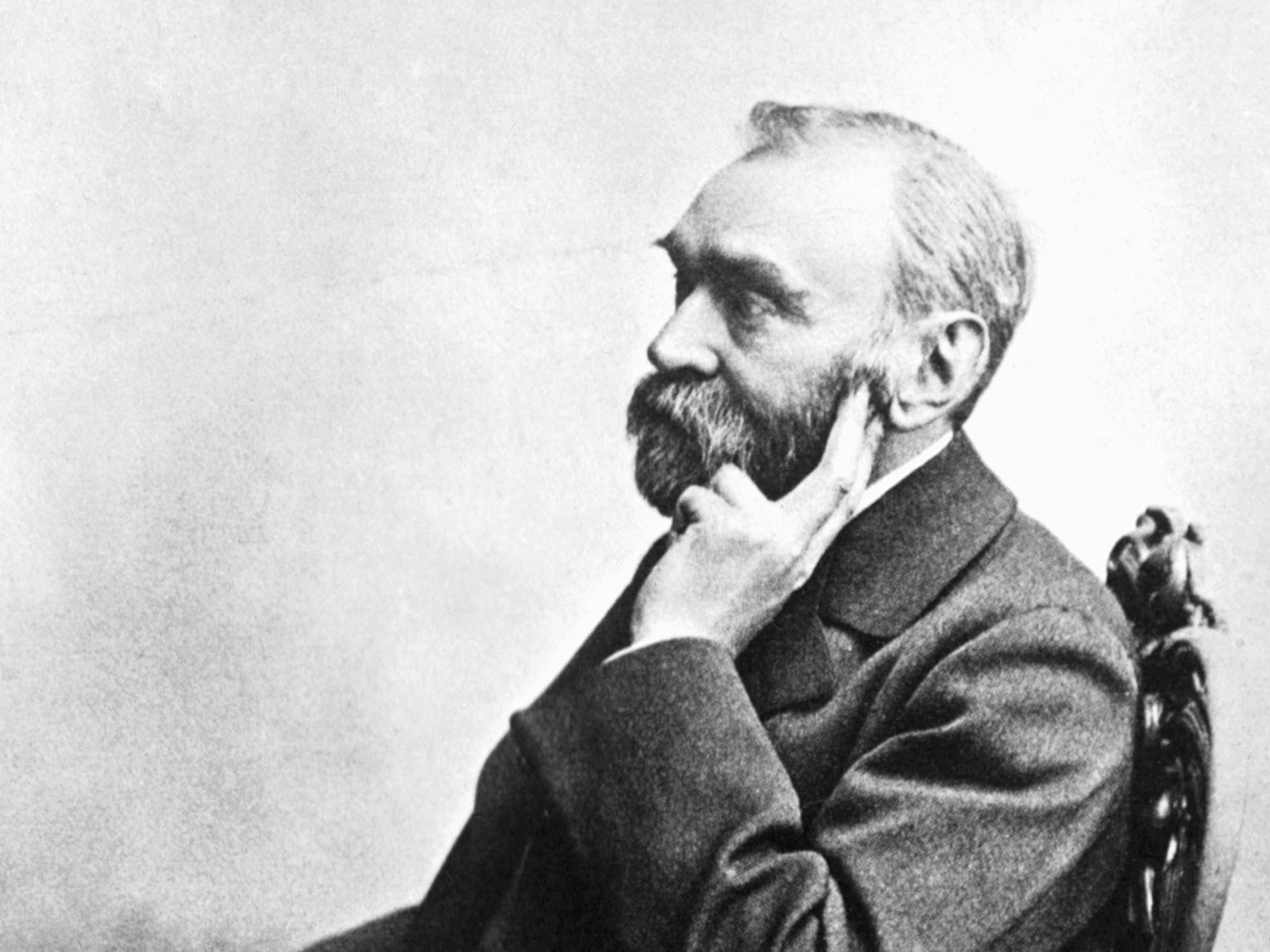For decades, physicists sought the Higgs boson: the theorized “God particle” whose alter ego, a field pervading the entire universe, endows matter with mass. In 2012, scientists finally found the elusive particle, and now, they've gained crucial new insights by watching it break apart.
In two new studies, physicists show that detectors at CERN's Large Hadron Collider (LHC) managed to observe Higgs bosons break down into pairs of tiny particles called bottom quarks. The find marks another feather in the cap for theoretical particle physics, which predicted this decay. The studies are also experimental breakthroughs that were decades in the making. (Read more about the Large Hadron Collider in National Geographic magazine.)
“We weren't sure we would ever actually be able to see it,” says CERN physicist Andreas Hoecker, deputy spokesperson for the ATLAS Collaboration, which manages one of the detectors. “Many people, in particular those who were in this experiment for a long time, are very, very excited about the results.”
Wondering what a Higgs boson is, what a bottom quark is, and why they matter? We've got you covered.
What's the Higgs boson?
The Higgs boson is a key particle within the Standard Model, the theory that describes the known elementary particles and the ways they interact. We know the Standard Model is incomplete; it doesn't include dark matter—the elusive substance that makes up 85 percent of mass in the universe—or a description of how gravity works at the quantum level. Still, it's remarkably successful at describing our universe's most basic bits and pieces. (Find out more about dark matter.)
In the 1960s, physicists including François Englert and Peter Higgs made an update to the Standard Model that explained why some particles, such as the packets of light known as photons, don't have mass, while other particles do. They theorized that an energy field throughout the universe interacts with particles in two different ways. Some particles, such as photons, zip through this so-called Higgs field as if nothing were there. Others get ensnared in the field, as if they were swimming through syrup. This slowdown is what gives those particles mass.
In particle physics, fields correspond to particles: Drop a rock in the “pond” of the electromagnetic field, and a photon will splash out. In much the same way, the Higgs boson represents an excited packet of the Higgs field.
After decades of searching, LHC researchers announced in 2012 they had found a new particle resembling the Higgs boson—a discovery that netted Englert and Higgs the 2013 Nobel prize in physics. Ever since, physicists have checked this new particle against the Standard Model to see if it behaves like the theoretical Higgs boson. So far, it has.
What do quarks have to do with it?
Unlike electrons, which can last for billions of years, the life of a Higgs boson is astonishingly short—less than a sextillionth of a second. After this fleeting existence, a Higgs boson breaks apart into other types of particles. For instance, researchers announced in 2014 that ATLAS and CMS, two detectors at the LHC, had watched Higgs bosons decay into pairs of gamma-ray photons.
The Standard Model also predicts that the Higgs can decay into particles called quarks. Quarks come in six flavors—up, down, top, bottom, charm, and strange—and are the building blocks for the protons and neutrons in atoms, among other larger particles.
The Higgs boson's decays have to follow some key rules. For instance, since the Higgs boson has no electric charge, its decay byproducts must combine to have zero electric charge as well. When the Higgs breaks down into quarks, which do have electric charges, they therefore emerge in pairs: one quark and one “antiquark,” a particle alike in every way but with the opposite electric charge. That way, the pair's charges cancel each other out.
The Higgs boson's mass also limits the possible decays. Because bottom quarks are each 30 times lighter than the Higgs, a Higgs boson can easily churn out a pair of them when it breaks down. The Standard Model says that when a Higgs boson decays, it will split into a bottom quark-antiquark pair about 58 percent of the time. This prediction was a crucial test for the Standard Model: If researchers never saw the Higgs boson decay into a bottom quark, then our deepest theories on the universe's workings would have been thrown into disarray.
“The Standard Model would not accommodate this at all,” says Hoecker.
Now, researchers using the ATLAS and CMS detectors have independently watched the actual Higgs boson break down into bottom quarks, showing reality matching theory.
How did researchers detect the decay?
Going back to the 1980s and 1990s, when the LHC was first conceived, physicists realized how hard detecting a Higgs-bottom decay was going to be, Hoecker says. The LHC smashes pairs of protons together near the speed of light, creating huge showers of particles that splatter the insides of massive detectors. This debris contains lots of different particles at once, and many of them look like the Higgs-bottom decay.
Physicists have to reconstruct precisely how a given collision unfolded using the decay particles they detected—a bit like figuring out how a massive car accident happened by examining the wrecks and tire tracks in the aftermath. (Find out how one mischievous animal shut down the entire LHC for a day.)
After years of collecting data, simulations and machine-learning algorithms let the ATLAS and CMS teams account for everything except the Higgs decay they were looking for. By 2017, the physicists had gathered enough data to have evidence for the decay. By this June, they were confident that their data wasn't a fluke.
“It's really a very complicated process, and it's a very big team of almost a hundred people working only on the analysis,” Hoecker says. “Overall, taking the data, operating the [ATLAS] detector, calibrating it, it's many, many more. The overall collaboration is about 3,000 scientific authors.”
Why does this matter?
For one, the studies provide even more certainty that we've figured how matter gets mass. That's no small thing in our understanding of the universe.
And because of the Higgs boson's key place within the Standard Model, even slight discrepancies between theory and observations could open the door to new physics. Now that physicists know that the LHC can detect this bottom-quark decay, they'll start tracking it to see if it breaks any rules.
“With every year of more data, we are looking to see any deviations from the predictions,” Hoecker says. “There's no reason that the deviations have to be large—usually in physics, the effects are small, and everything's about precision.”
What kinds of hidden rules to the universe might we uncover? Unless and until the Higgs boson reveals more secrets, Hoecker says, scientists can't know for sure: “We can only humbly continue our measurements, and nature will tell us.”













